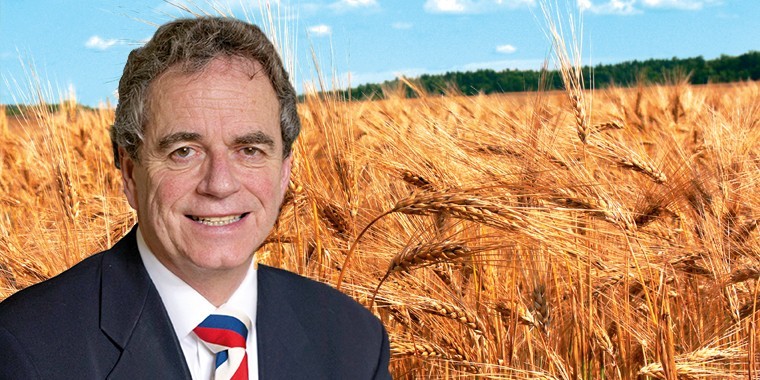With our EU leaving date now extended to 31 October, with our MP’s on holiday, and the French pre-occupied with Notre-Dame, Brexit has gone quiet for a change. This article is early again – 16 April – but the trade has calmed down with the news of the extension. Unless our government hit the ‘ejector seat button’, by suddenly deciding not to take part in the European elections on 23 May, then we should now be able to resume normal trading relations with the EU over the next six months.
The world trade is still expecting a big ‘bounce back’ in production terms for the 2019 wheat harvest, to recover the 30 million tonnes lost last year. The American wheat plantings continue to cause concern, following the record low winter plantings, about one million acres of spring wheat land has been under water, and may only be suitable now for maize and soya instead. Closer to home, there have been two problem areas.
As I have been reporting for two months, the Iberian peninsular has been too dry and hot. Spain has had some rain, but it’s probably too late for crops that are due to be harvested in June. The Brexit extension should mean UK coasters of feed barley and wheat will be traded there during May/June/July. Northern Europe has had similar problems: so Scandinavia and Germany are both very dry: with hot weather forecast for the Easter period. There is no doubt it’s been a dry winter, and water levels in Europe have not recovered yet from the situation we had last Summer and Autumn: where major rivers like the Rhine and Mosel were not navigable even for small grain barges. France and the rest of ‘nearby’ South Western Europe looks ok on weather: as does the South of England. Parts of North Norfolk have had very little rain for weeks, and need close monitoring. I was trading back in the drought year of 1976, and I have to say there are some similarities between the winter/spring we had then and this year!
The main concern for the UK trade is, we still do not know the size of the 2018 harvest wheat crop that we had. Nothing new there, I hear you say. But, owing to the conflicting figures between the DEFRA planting survey, and the BPS payment figures, some still believe we had a crop of 13.9 million tonnes, while most of us think it was only 13.1 million! With only three months to go until harvest, that is quite a big tonnage to find, if it’s not there! With a more modest difference, last year the old crop wheat market jumped £20 in June/July, so it’s probably still worth keeping some wheat back just in case.
UK oilseed rape remains an enigma. Despite the imports of cheap French seed, the small amount of seed remaining on farm has held it’s old crop value. Weaker sterling this week is helping. It is the condition of the planted crop which is more concerning. Apart from Kent and the very South coast, really from the North West of London, through the Thames Valley, over to the Cotswolds and West Midlands, you have varying degrees of damage caused by flea beetle larvae. In the Autumn some damage estimates in Beds/Bucks were up to 70%. Since then crops which seemed to have escaped, and got through the winter, have now succumbed. So the losses are unquantifiable. If it turns out to be an average of 30%/40% lost the UK crop could reduce to only 1.4/1.5 million tonnes leaving a deficit of half a million tonnes!
I can understand why some farmers, with old crop seed left unsold are considering rolling it into new crop, where the demand is certain, but the supply is not.
As it is Easter at the time of writing, and a time associated with resurrection, it could be, that the uncertainty created by Brexit may have fortuitously prevented us from making new crop sales, before a real weather story appears, and the price has ‘arisen’ again!




